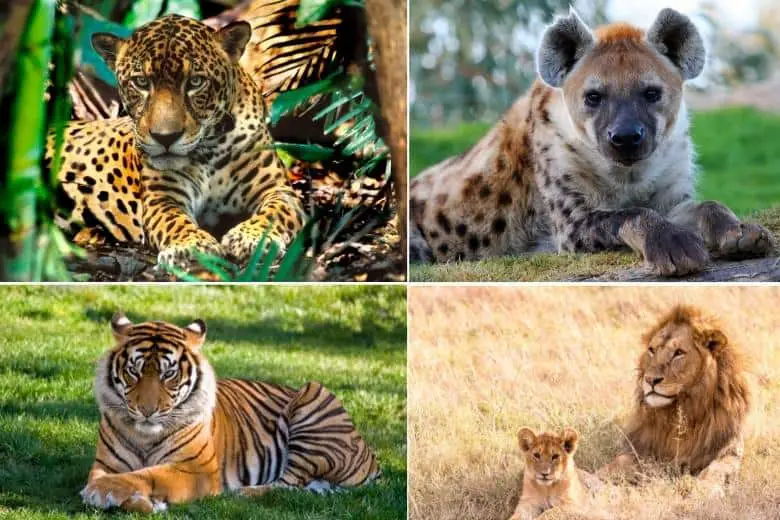There are many contenders for the title of animal with the largest egg, but it is generally agreed that the ostrich lays the largest eggs of any living bird. Ostriches are not the only animals that lay large eggs, however. The elephant bird, which is now extinct, was likely the owner of the largest eggs ever laid by any animal, while the largest egg currently in existence is that of the whale shark.
In this article, we will take a look at the animals that lay the largest eggs in the world, both in terms of size and weight. We’ll also find out how these massive eggs are produced, and what happens when they hatch.
1. Ostrich Hen

The ostrich is the largest living bird on the planet. They are native to Africa and can weigh up to 345 pounds and stand over 9 feet tall. Ostriches are fast runners and can sprint up to 43 miles per hour.
Ostriches lay the largest eggs of any bird in the world. A single egg can weigh up to 3 pounds and is the size of a grapefruit. Ostriches can lay up to 60 eggs per year.
The ostrich life cycle starts with an egg. The ostrich hen will incubate the egg for 42 days. After the egg hatches, the chick will stay with its mother for up to a year. Once the chick is fully grown, it will leave its mother and start its own flock.
Ostriches are interesting creatures. They are the only bird with two toes on each foot. Ostriches also have the largest eyes of any land animal.
Fun facts about Ostrich Hen
- Ostriches are the largest living bird in the world.
- Ostriches can run up to 70 km/h (43 mph).
- Ostriches can live up to 40 years in the wild.
- The ostrich’s diet consists mostly of plants, but they also eat insects and small animals.
2. Emu

The emu is a flightless bird that is native to Australia. These birds are the second largest living bird in the world, second only to the ostrich. Emus can grow up to 6 feet tall and weigh up to 130 pounds.
Emus are interesting birds because they can lay eggs multiple times per year. In fact, they can lay up to 10 eggs at a time! And each of these eggs can weigh up to 1.5 pounds. That means that a single emu can lay up to 15 pounds of eggs in a single year!
The life cycle of an emu begins when the female lays her eggs. The eggs will incubate for about 8 weeks before they hatch. The chicks will then stay with their mother for several months before they are old enough to fend for themselves.
Fun facts about emus:
- Emus can run up to 30 miles per hour!
- They are the only bird in the world that has calf muscles.
- Emus are excellent swimmers and can even dive underwater.
- Their feathers are used to make Aboriginal ceremonial dresses.
3. Elephant Birds
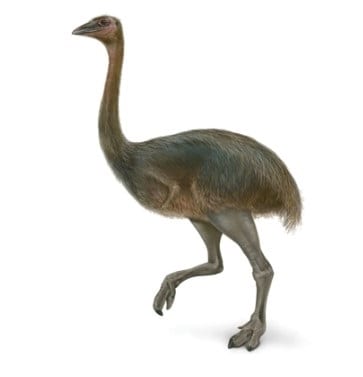
The elephant bird was a large, flightless bird that lived on the island of Madagascar. The largest elephant bird could weigh up to 450 kg (1000 lbs) and lay an egg that weighed 5 kg (11 lbs)! The elephant bird was hunted to extinction by humans in the 17th and 18th centuries.
The elephant bird was a close relative of the ostrich and the kiwi. It had long legs and a long neck, but it could not fly. The elephant bird was covered in feathers, but it did not have a tail.
The elephant bird laid the largest eggs of any bird that has ever lived! A single egg could weigh up to 5 kg (11 lbs). The elephant bird could lay up to three eggs in a single clutch.
The elephant bird hatched from an egg that weighed about 10% of its body weight. The chick grew quickly and could weigh up to 30 kg (70 lbs) by the time it was one year old.
The elephant bird lived for about 10 years in the wild.
The elephant bird was native to the island of Madagascar. It is thought that there were three subspecies of the elephant bird, but only one is known for sure. The elephant bird was hunted to extinction by humans in the 17th and 18th centuries.
The elephant bird was an important part of the ecosystem of Madagascar. It was a top predator and helped to keep the populations of other animals in check. The elephant bird was also an important source of food for humans.
Some fun facts about the elephant bird:
- The elephant bird was the largest bird that has ever lived!
- The elephant bird could lay an egg that weighed up to 5 kg (11 lbs)!
- The elephant bird was hunted to extinction by humans in the 17th and 18th centuries.
- The elephant bird was an important part of the ecosystem of Madagascar.
4. Cassowary
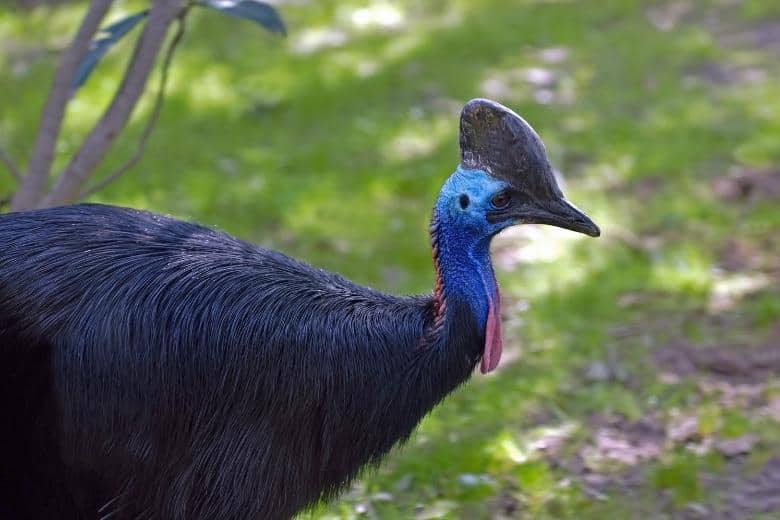
The cassowary is a large, flightless bird that is native to the tropical forests of New Guinea and northeastern Australia. These birds are best known for their bright blue heads and necks, which are topped with a casque, or helmet-like structure. Cassowaries are shy and reclusive birds, but they are also among the most dangerous animals in the world. These birds can grow up to six feet tall and weigh up to 200 pounds.
Cassowaries are proficient swimmers and can run up to 30 miles per hour. They are also excellent climbers and can jump up to five feet in the air. Despite their size and strength, cassowaries are shy and reclusive birds. They are usually solitary creatures, although they will sometimes form small flocks.
Cassowaries are polygamous birds, meaning that they will mate with more than one partner during the breeding season. These birds usually lay two to three eggs at a time, which are incubated by the male for about 50 days. The chicks are then cared for by the father for several months before they are old enough to fend for themselves.
Fun facts about cassowaries:
- The cassowary is sometimes called the “dinosaur of the bird world” because of its prehistoric appearance.
- The cassowary is the second heaviest bird in the world, after the ostrich.
- The cassowary is the third tallest bird in the world, after the ostrich and the emu.
- The cassowary is the only bird in the world that can kill a human with a single kick.
5. Whale Shark
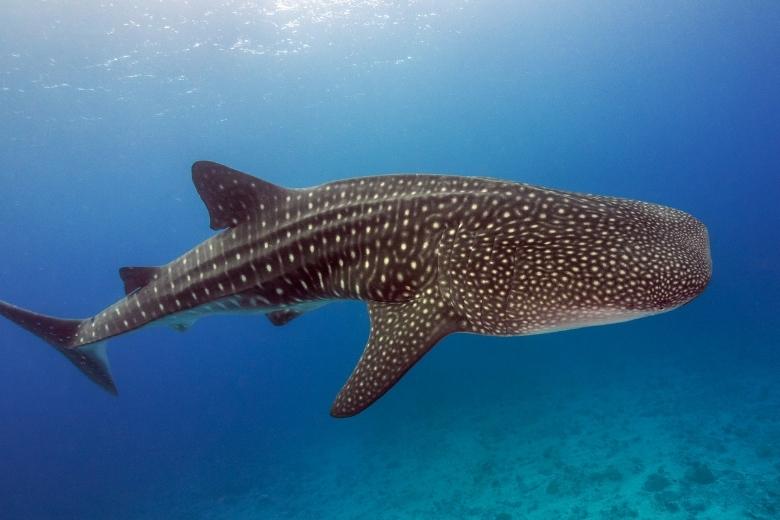
The whale shark is a filter-feeding shark and the largest known extant fish species. The whale shark is an endangered species and is vulnerable to extinction. The whale shark is not a threat to humans.
The whale shark is a massive fish, with some individuals reaching over 12 m (40 ft) in length. The average length of a whale shark is 9.7 m (32 ft). The whale shark is the largest living fish species.
The whale shark is a filter feeder and feeds on plankton, krill, and small fish. The whale shark can filter up to 2000 L (530 gal) of water per hour.
The whale shark can lay up to 300 eggs at a time. The whale shark lays its eggs in the water and the larvae hatch after about 6 to 8 weeks. The young whale sharks are about 60 cm (2 ft) long at birth.
The whale shark has a life span of about 70 years.
Some fun facts about the whale shark:
- The whale shark is the national fish of the Philippines.
- The whale shark is the largest non-mammalian vertebrate in the world.
- The whale shark is an endangered species.
6. Kiwi
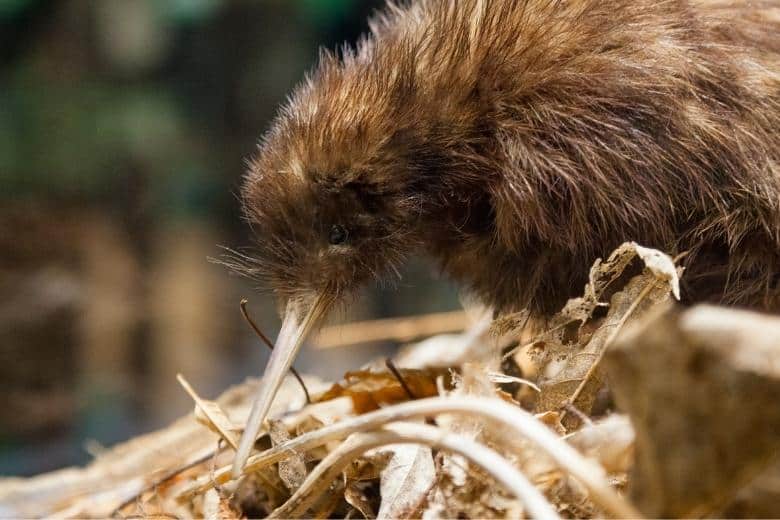
The kiwi is a small, flightless bird that is native to New Zealand. The kiwi is the smallest member of the ratite family, which includes birds such as ostriches, emus, and rheas. The kiwi is a national icon of New Zealand, and the bird’s image is featured on the country’s $1 coin.
The kiwi is a small bird, with males measuring 35-45 cm (14-18 inches) in length, and females 30-40 cm (12-16 inches). The bird has a long, curved bill, and small, weak wings. The kiwi is the only bird with nostrils at the end of its bill, which it uses to sniff out food. The kiwi is mostly nocturnal and is rarely seen in the daytime.
The kiwi lays the largest egg in proportion to the body size of any bird in the world. A kiwi egg can weigh up to 20% of the female’s body weight. Kiwis typically lay 2-3 eggs per clutch and can lay up to 2 clutches per year.
The kiwi has a lifespan of 10-20 years in the wild and up to 30 years in captivity.
Some fun facts about the kiwi:
- The kiwi is the only bird with nostrils at the end of its bill.
- The kiwi is the national icon of New Zealand.
- The kiwi is the smallest member of the ratite family.
- The kiwi lays the largest egg in proportion to the body size of any bird in the world.
7. Crocodile
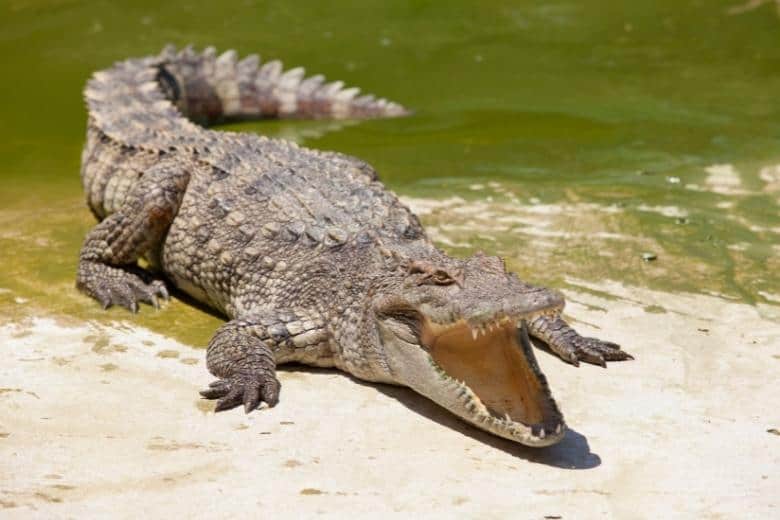
The crocodile is a large reptile that is found in tropical and subtropical regions around the world. The crocodile is a predator, and its diet consists of fish, reptiles, and mammals.
The crocodile is an ambush predator, and it often lies in wait for its prey to come close before attacking. The crocodile is capable of killing and eating large animals, and it has been known to attack humans. Crocodile is a protected species in many parts of the world, and it is illegal to hunt them.
They can grow to be over 20 feet long. crocodiles can lay up to 100 eggs per year, and their eggs can weigh up to 12 pounds each. The crocodile’s life cycle begins with an egg that hatches into a small crocodile. The young crocodile will then grow to be an adult.
Fun facts about crocodiles
- They can live to be over 100 years old.
- They can swim up to 30 miles per hour.
- They can hold their breath for up to an hour.
8. Chinese Giant Salamander
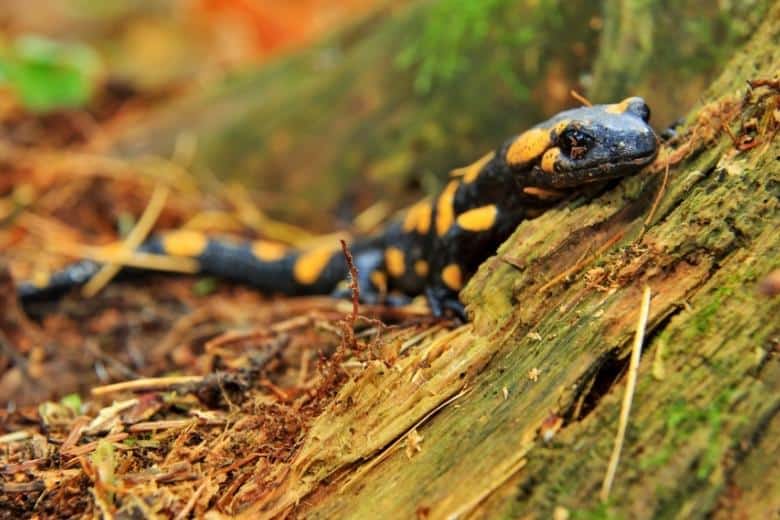
The Chinese giant salamander is the largest amphibian in the world, growing up to 1.8m in length. They are found in mountain streams and lakes in central China, where they scavenge for food such as fish, crabs and insects.
These salamanders can live for up to 60 years and are fully grown by the time they are 10. Females lay around 500 eggs at a time, which hatch into larvae after around two months. The larvae then transform into adult salamanders after a further two to three years.
Fun facts:
- Chinese giant salamanders are sometimes referred to as ‘water dragons’ due to their appearance.
- They are considered a delicacy in China and can be sold for up to $2000 per kilogram.
- These salamanders are listed as ‘critically endangered by the IUCN, due to habitat loss and over-exploitation.
9. Trumpeter Swan

The Trumpeter Swan is the largest waterfowl in North America. It is also the heaviest flying bird in the world. Adult Trumpeter Swans can weigh up to 22 pounds and have a wingspan of up to 8 feet.
Trumpeter Swans can lay up to 8 eggs at a time, but usually, only 4 or 5 will hatch. The eggs are about the size of a chicken egg and take about 35 days to hatch.
The Trumpeter Swan has a very long life span, often living for 20 years or more in the wild.
Some fun facts about Trumpeter Swans:
- The scientific name for the Trumpeter Swan is Cygnus buccinator, which means ” trumpet-like swan.”
- Trumpeter Swans are the only swans that can fly.
- Trumpeter Swans are very vocal birds and can make a variety of sounds, including trumpeting, grunting, and hissing.
- Trumpeter Swans are very protective of their young and will fiercely defend them from predators.

